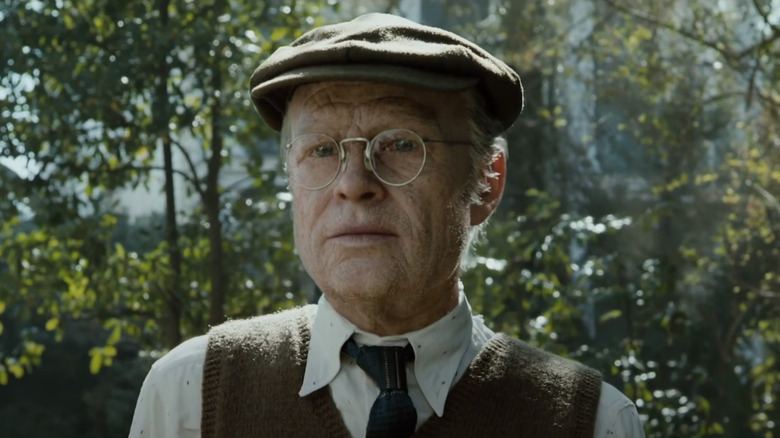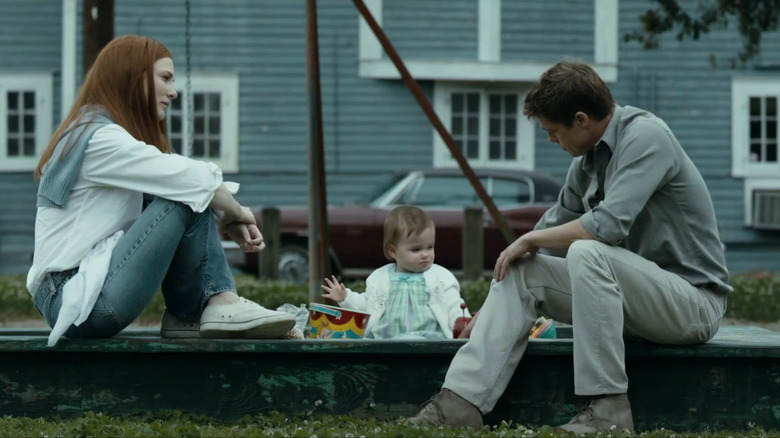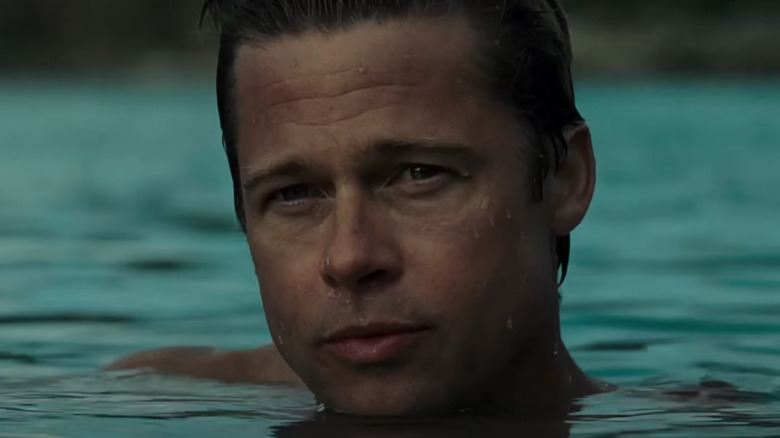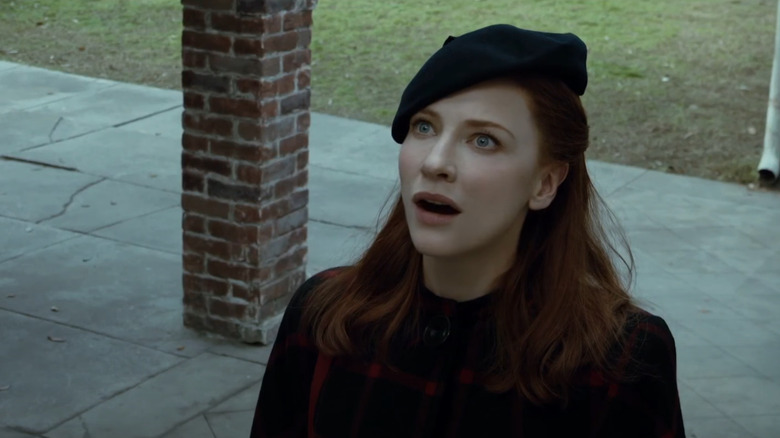Why David Fincher Went Digital For The Curious Case Of Benjamin Button
David Fincher loves doing an insane amount of takes. Much like Stanley Kubrick, who revelled in using exhausting methods on-set, Fincher is a stickler for pushing his actors beyond reasonable expectations in search of the perfect take. Before filming started on "The Social Network," the director reportedly told Justin Timberlake he was going to have him repeat scenes until he'd, "gone past memorizing it, gone past knowing [his] own name, until we can get all of the physical nonsense so ingrained that we can get to what the actual text is." Jake Gyllenhaal also spoke about his experience on "Zodiac," telling The New York Times, how he'd, "do a lot of takes, and [Fincher] would turn, and he would say, because he had a computer there, 'Delete the last 10 takes.' And as an actor that's very hard to hear."
2007's "Zodiac" was the first time Fincher shot a movie digitally (though some scenes were still shot on film) and it seems that format played nicely into his penchant for shooting multiple takes. After he'd wrapped his crime drama, the filmmaker sung the digital's praises to Cinemontage in 2007, saying:
"The great thing about digital moviemaking is that for the first time in the history of motion pictures, everyone — from the cameraman to the hair and makeup people — is looking at the same 23-inch monitor, reviewing a take and talking about the exact same thing [...] It's just another way of democratizing information."
Unsurprisingly then, when Fincher moved from "Zodiac" to an adaptation of F. Scott Fitzgerald's short story, "The Curious Case of Benjamin Button," he was keen to embrace his newfound love for digital filmmaking. In this case, however, Fincher's appreciation for digital wasn't just about reviewing takes. As it turns out, the film actually demanded a digital workflow.
De-aging Brad Pitt
"The Curious Case of Benjamin Button" is somewhat of an outlier in David Fincher's filmography. Though it's not devoid of darkness, it's much more concerned with emotional impact and grappling with weighty existential themes than it is with Fincher's usual bleak depictions of crime and degeneracy. Because of this, celluloid's charming and nostalgic visuals would have fit the movie perfectly if it weren't for the sheer amount of CGI needed to pull off the aging and de-aging effects on Brad Pitt.
The story deals with a man who essentially ages backwards, starting life as an (honestly, unsettling) old man baby and de-aging as he gets older to become an actual baby by the film's end. In order to convincingly showcase such an ambitious effect, Fincher and his team were required to take Pitt's performance and translate it to CGI, where he could be appropriately aged or de-aged. This involved a rig made up of 28 cameras to capture facial expressions, which were shot separately from Pitt's actual in-scene performances. According to VFX Supervisor Eric Barba, these physical performances were shot on a soundstage with four HD cameras using "image analysis technology to get animation curves and timings."
This was a time before Marvel started de-aging its stars, before young Luke Skywalker started showing up in streaming shows, and before Harrison Ford got the best makeover of his life in the upcoming "Indiana Jones and The Dial of Destiny." Way back in 2008, Fincher needed to figure out the best workflow to accommodate his monumental project, and film simply wouldn't have cut it.
'There was no way to do it on film'
Speaking to Film Comment in early 2009, David Fincher was asked if he'd ever considered shooting "Benjamin Button" on film, to which he replied:
"There was no way to do it on film. We went all digital because I can do it in my office [...] we'll just deal with this in the HD world that we already figured out for 'Zodiac,' and only have to go a few steps further for 'Benjamin Button.'"
Specifically, Fincher wanted to make the process of refining scenes, especially those featuring CGI, much easier and collaborative:
"We have the art department here, and we have PIX [the platform that stores production content], so the editorial department and the production designer can draw up what a matte painting should look like and we can email that up to Matte World in Marin County and they can comment on it on PIX, and then they can redraw stuff, and we can say that's it. And this is the locked picture."
Shooting digitally allowed Fincher and his team to work on what was a significant task without having to wait for film negatives to be cut. In the documentary "Side by Side," the director talked about how when working with film, he hated being surprised by focus issues once he got back from set and reviewed the rushes. "Some of Darius Khondji's work on 'Se7en,' you would just go, 'Wow,'" he said, "but there was an equal amount of times where you would [...] say, 'What the f***.'" Fincher conceived of an innovative new performance capture technique to translate Pitt's acting to CGI, but those techniques didn't allow for any of these sorts of surprises while working on "Benjamin Button."
Fincher and digital were made for each other
David Fincher has become one of the biggest proponents of digital, which is unsurprising considering his proclivity for shooting an ungodly amount of takes and reviewing them in the moment. That approach seems to have carried forward to his work on Netflix's "Mindhunter," where he managed to bewilder actors with his Kubrickian methods. Only digital cameras allow for that kind of approach, so it seems Fincher and this modern form of cinematography were always destined to come together.
But in the case of "Benjamin Button," he didn't really have much of a choice — going digital was the only way to reasonably accommodate the CGI demands involved. In fact, the movie is one of the most CGI-heavy of Fincher's entire filmography, which — considering its focus on deeply human and emotional themes — gives it a slightly surreal aspect. Watching it, you're simultaneously moved by the remarkable retelling of a whole life with all its vicissitudes and triumphs, and slightly unsettled by Brad Pitt's essence being grafted onto this strange elderly baby child thing. The film has proven controversial for these reasons, but I think it works even though it entirely eschews the visual familiarity and softness that comes with shooting on film. Its emotional beats, however, hit just as hard as any starkly depicted Fincherian crime scene.



